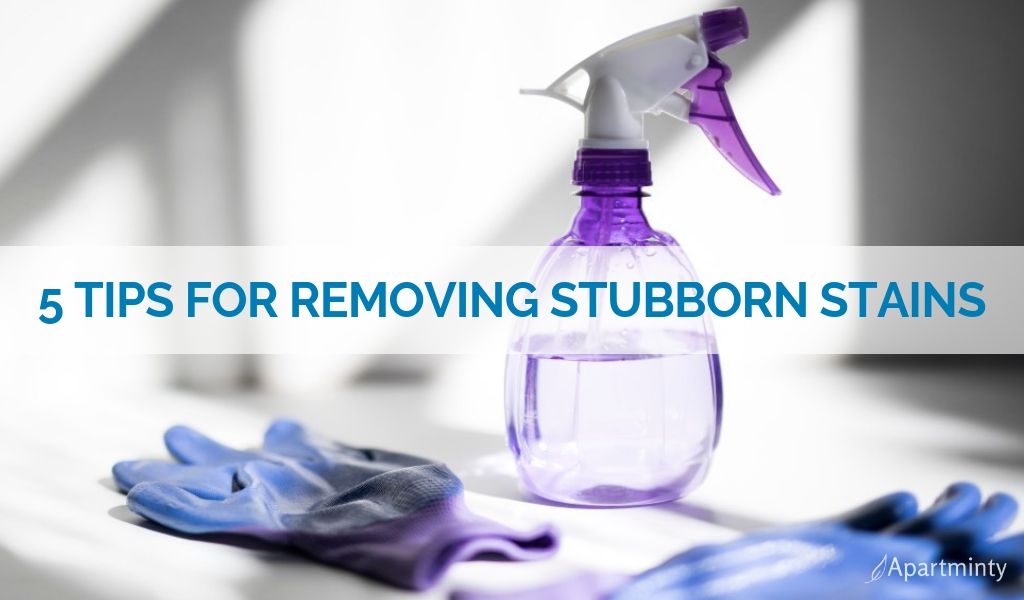
Guest Post
Removing stains from carpet can be tough. We’re here to offer some helpful tips that can make the removal more successful, without damaging your carpets.
1. Use the right cleaning solution for the right stain
You probably wouldn’t use a screwdriver to pound in a nail, nor would you use a hammer to tighten a screw. The point is, you need the right tools for the right job. Removing stains from carpet is no different. You need to apply the right solutions to the stains to effectively remove them.
Water-soluble stains are usually easiest to clean. They are things like soda and alcohol. Just some clean water and maybe a few drops of diluted dish soap, applied and then absorbed into a towel often do the trick.
Protein-based stains will be trickier. Blood, dairy, meat, etc. all fall into this category. Here, a peroxide-based product can often be effective. Be sure to test for colorfastness.
Fat and oil-based stains like cooking grease, petroleum jelly, lipstick, etc. will often be tough to remove. Many carpets are made with petroleum and fats, and oils like to adhere with other fats and oils, making them tricky to remove. Citrus based solutions and solvents can be useful, as can higher pH cleaners.
Buy and use the right solutions for the specific stain you are targeting, and you’ll have far better results.
2. Blot and agitate, don’t scrub.
Scrubbing the carpet is a mistake that is going to lead to potential damage while further driving the stain into the carpet. Instead, you should start by blotting the carpet stain. If needed, use something like a plastic spatula or a credit card to agitate the area you are cleaning gently. This will avoid the potential damage you could otherwise cause by aggressively scrubbing the carpet.
3. Rinse, rinse, rinse!
Any cleaning solution you apply needs to be thoroughly rinsed out. Saturating a stain with pet urine carpet spray may act as a deodorizer, but it’s done nothing to remove the underlying problem. Furthermore, many over the counter products and DIY remedies leave behind residues that will lead to re-soiling.
You may be able to use a portable spot cleaner along with a healthy amount of water (don’t drown your carpet!) to get the job done. If that’s not available, extracting water with a wet/dry vacuum can also work well.
4.) Avoid using bleaches, oils, or heavy soaps.
There is plenty of bad advice out there regarding carpet stain removal. Here are a few DIY methods to avoid.
Don’t use diluted bleach to clean carpets. Don’t do this. Bleach is meant to remove pigment. Spraying it on your carpet will, not surprisingly, remove pigment from the carpet and bleach it. Likely you’ll end up with an off-color orangey looking spot where the bleach removed some, but not all of the pigment. When this happens, you’ll need to either dye the carpet or patch in a new piece.
Avoid using oils to clean the carpet. WD-40, mineral oil, baby oil, petroleum products, and so on. We’ve seen all this stuff recommended for carpet cleaning. Some are potent solvents and will indeed remove certain stains. However, in most cases, you’ll end up replacing one stain for a very difficult to remove stain that may not immediately be visible but will attract dirt like a magnet.
A few drops of diluted dish soap probably aren’t going to hurt when used in a DIY carpet cleaning solution, but direct application of undiluted soap of any kind is going to leave a dirt-attracting residue and will be very difficult to rinse from the carpet.
5.) When all else fails, hire a professional carpet cleaning company.
There are going to be stains that you come across that you just won’t be able to tackle. Usually, these fall into the categories of permanent ink, tar, certain red stains like Koolaid, heavy-duty adhesives, some pet stains or deep stains that are well into the carpet padding and keep resurfacing.
Professionals have the advantage because they are armed with powerful equipment and specialized solutions you won’t find at the store. Even if you could, without the proper equipment to rinse and extract the solutions, you’d be stuck with sticky, crunchy residues or worse, could damage the carpet.
For those impossible to remove stains, you may need to have the carpet repaired instead. Here, a professional can cut out the damaged area and seam in a new piece of carpet, leading to an (if correctly done) repair that’s hardly noticeable, if at all.
GUEST BLOGGER

Gabe Nelson
Content Specialist
Gabe Nelson is a content specialist of over 7 years of experience, currently working for Msscleaning. Just out of high school he set off crab fishing on the Bering sea in Alaska. From there he went back home to finish his college degree at the University of Montana. He has written hundreds of content pieces in numerous niches. Currently, he lives in Missouri with his wife and kids enjoying the peaceful town of St. Joseph.